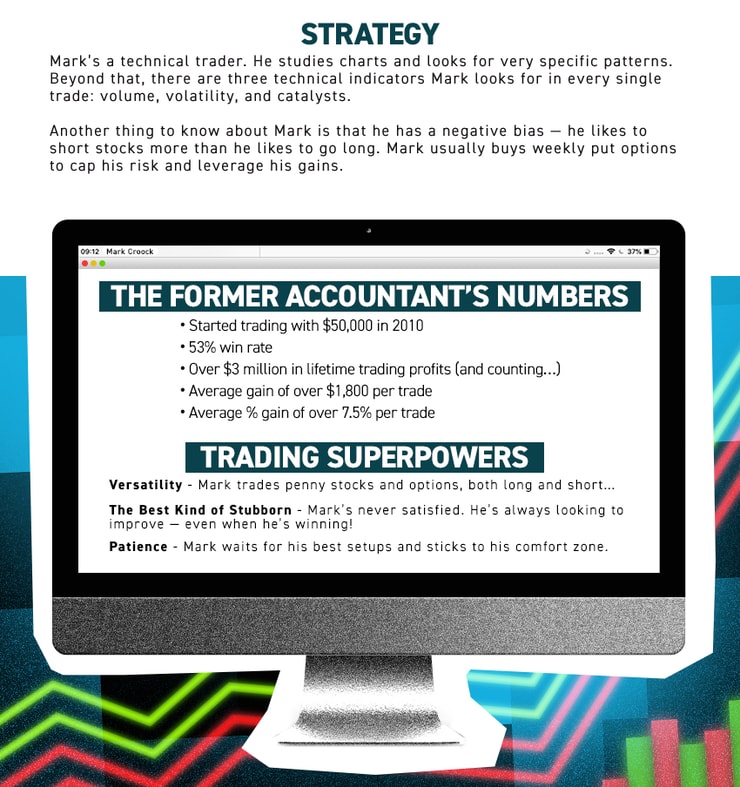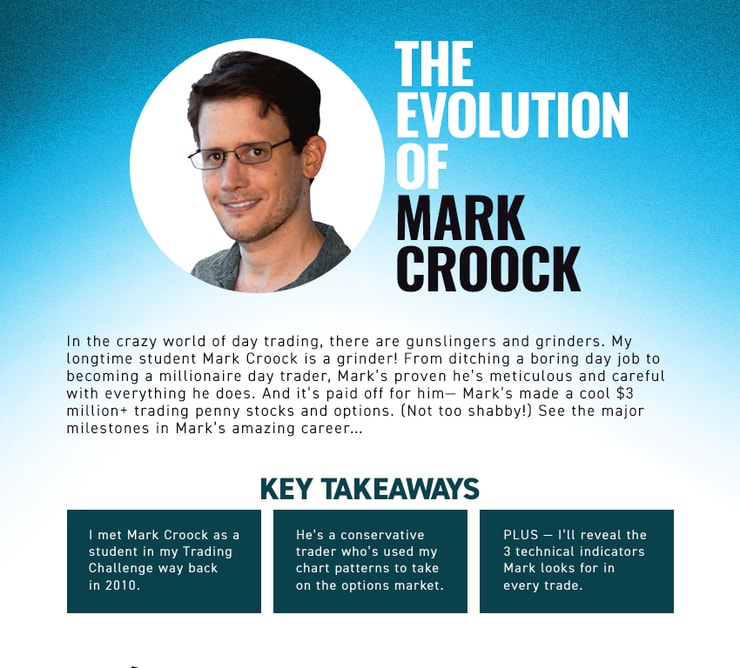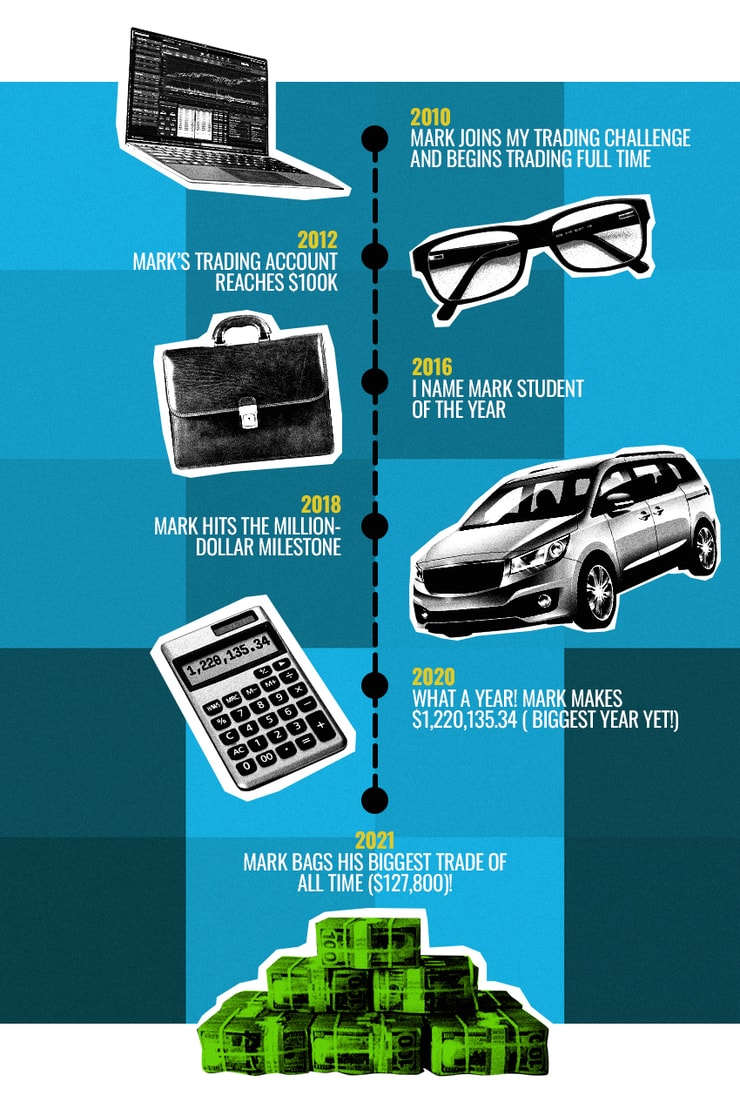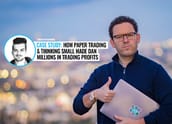Mark’s Case Study: Key Takeaways
- I met Mark Croock as a student in my Trading Challenge way back in 2010…
- He’s a conservative trader who’s used my chart patterns to take on the options market…
- PLUS — I’ll reveal the 3 technical indicators Mark looks for in every trade…
Tonight at 8 p.m. Eastern — Mark Croock’s “$100K Shortcut Summit” — Register Now

2025 Millionaire Media, LLCIn the crazy world of day trading, there are gunslingers and grinders. My longtime student Mark Croock is a grinder! From ditching a boring day job to becoming a millionaire day trader, Mark’s proven he’s meticulous and careful with everything he does. And it’s paid off for him— Mark’s made a cool $3 million+ trading penny stocks and options. (Not too shabby!) See the major milestones in Mark’s amazing career…
Table of Contents
Timeline
- 2010: Mark joins my Trading Challenge and begins trading full time
- 2012: Mark’s trading account reaches $100K
- 2016: I name Mark Student of the Year…
- 2018: Mark hits the million-dollar milestone…
- 2020: What a year! Mark makes $1,220,135.34 ( biggest year yet!)
- 2021: Mark bags his biggest trade of all time ($127,800)!
Strategy
Mark’s a technical trader. He studies charts and looks for very specific patterns. Beyond that, there are three technical indicators Mark looks for in every single trade: volume, volatility, and catalysts.
Another thing to know about Mark is that he has a negative bias — he likes to short stocks more than he likes to go long. Mark usually buys weekly put options to cap his risk and leverage his gains.
The Former Accountant’s Numbers
- Started trading with $50,000 in 2010
- 53% win rate
- Over $3 million in lifetime trading profits (and counting…)
- Average gain of over $1,800 per trade
- Average % gain of over 7.5% per trade
More Breaking News
- CRCL Stock Soars: Time to Act?
- VALE Stocks Surge: What’s Ahead?
- Growth or Bubble? Understanding ASTI’s Rapid Surge
Trading Superpowers
- Versatility! Mark trades penny stocks and options, both long and short…
- The Best Kind of Stubborn. Mark’s never satisfied. He’s always looking to improve — even when he’s winning!
- Patience. Mark waits for his best setups and sticks to his comfort zone.
Evolve Your Trading With Mark!
- Tim Sykes’ Trading Challenge — webinars and chat room moderation
- Evolved Trader
- See Mark’s profit chart here.
- Check out Mark’s biggest trading year — $1,220,135.34 in 2020 — here.
- View Mark’s biggest trade to date of $127,800 here.
- Learn more about Mark’s journey here.











Leave a reply